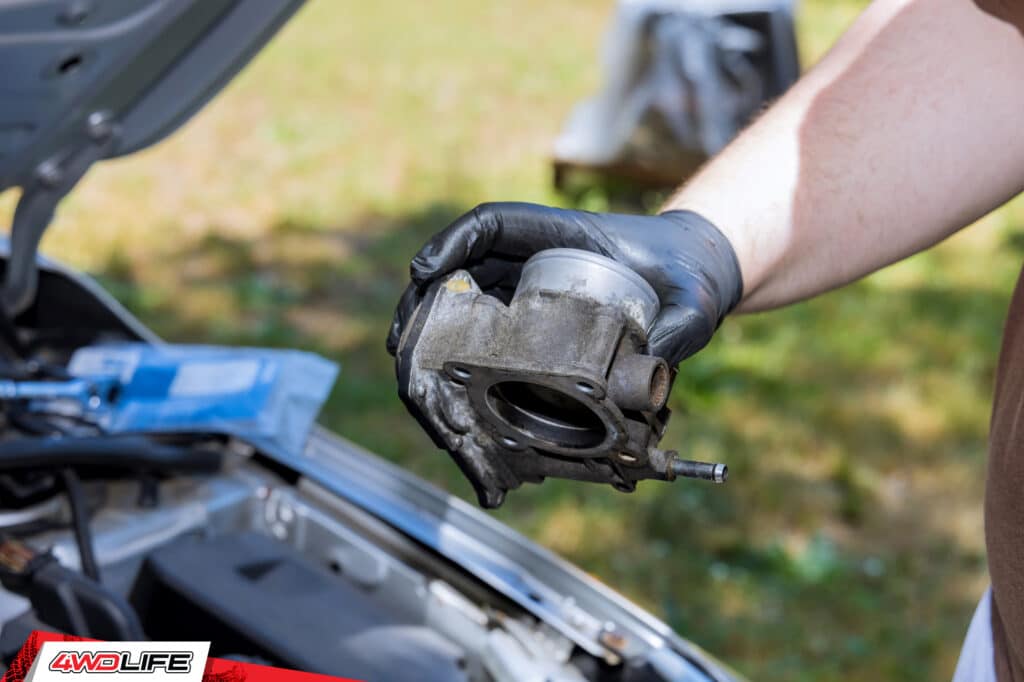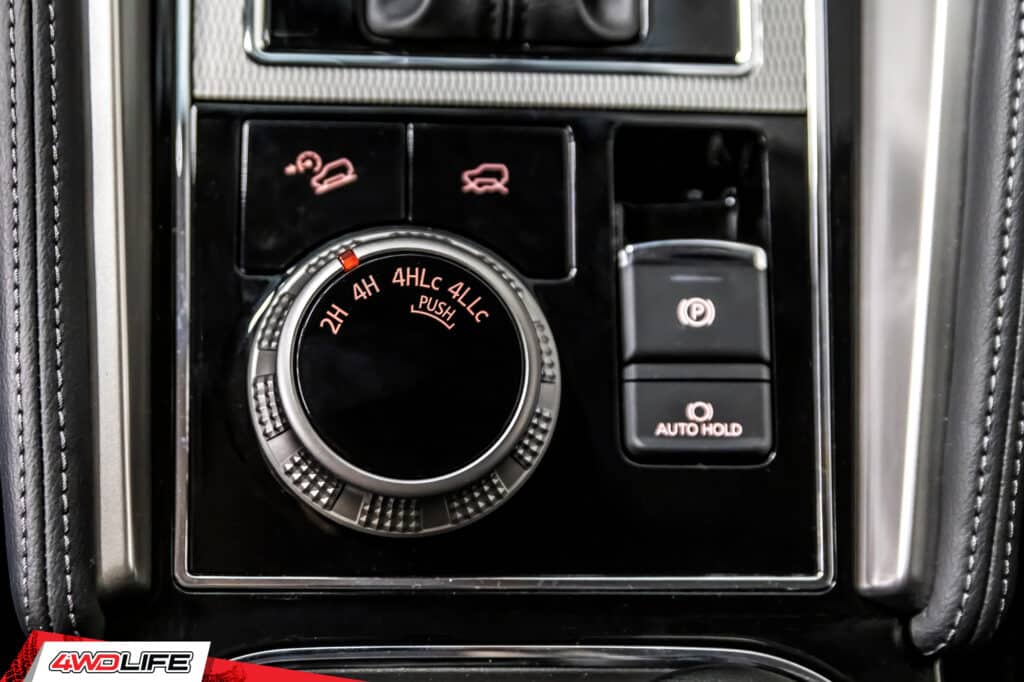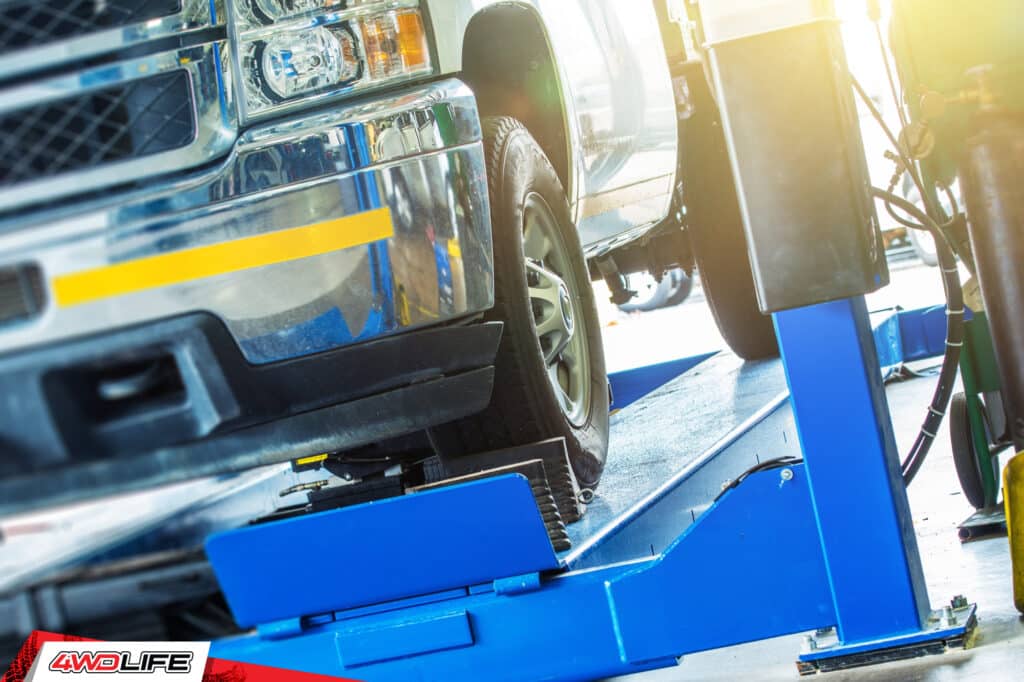
You typically don’t need 4WD in your SUV or truck for daily driving. In fact, you should be using your vehicle’s 2WD setting on most days. It’s more fuel efficient and is more suitable for driving on roads and highways. This is why most 4WD-capable vehicles these days default to 2WD unless the truck is full-time 4WD.
But what if you want to switch to 4WD and your vehicle wouldn’t let you? Or does your dashboard’s 4WD light keep on blinking? These are signs that there’s something wrong with your 4WD system. The usual culprit? A 4WD actuator that has gone bad.
Let’s find out what a 4WD actuator is, its role in your SUV or truck’s 4WD system, and how to tell if a 4WD actuator is bad.
What is A 4WD Actuator?

A 4WD actuator is an electrical component that facilitates the seamless running of the 4WD system. What does a four-wheel drive actuator do? It engages and locks the differentials to activate selectable 4WD modes on demand and is activated using a front axle engagement switch.
These days front axle engagement switches can be an actual switch, shifter, dial, or button. It also tells the transfer case to engage low-range gears in case 4L has been selected.
The actuator can use electronic solenoids or vacuum hoses that use a shift and fork mechanism to send signals to the axles to lock the front wheels. Depending on your vehicle’s model, you can activate the device through a simple dashboard switch or a shifter.
The actuator is usually located near the front axles in or underneath the engine bay. Because of its location, it is prone to damage due to impact, corrosion, and water damage. When it is damaged or becomes faulty, you’ll start experiencing various 4WD issues.
Symptoms and Signs of a Bad Actuator

When your 4WD actuator is faulty, you can experience many subtle and obvious symptoms. If you are a keen driver, you can notice the issue before the actuator is wholly damaged as long as you know what to look for.
Difficulty Engaging 4WD Modes
A common symptom of a bad actuator is difficulty in engaging 4WD modes. You’d notice that your vehicle wouldn’t change its driving mode even if you select or toggle a different 4WD mode. For example, your truck or SUV wouldn’t switch from 2H to 4H/4L, or you can’t return to 2H from one of the 4WD settings.
What would cause 4WD not to engage? A bad actuator is a common cause.
Sluggish Throttle Response
Any vehicle in perfect condition exhibits instant response to throttle changes. And in rare instances when you experience throttle delays, it recovers after a few minutes. On the other hand, a faulty 4WD actuator leads to frequent throttle response delays.
Typically, bad 4WD actuators can send false signals to the ECU, leading to the injection of an overly rich fuel-oil mixture into the engine. An imbalance in the fuel-air mixture in the combustion chamber can delay ignition cycles due to engine calibration. Moreover, the actuator is a vital part of the electronic fuel injection system, influencing throttle response.
Frequent Engine Stalls
A worn-out actuator can significantly affect the idling ability of your four-wheel drive vehicle, and the engine may stall or shut off abruptly when it’s in low idling. Mainly, this symptom manifests when the actuator is entirely dead, and the vehicle diagnostic report may show an OBD-II error.
Poor Fuel Economy
Decreasing fuel economy may indicate an actuator going bad since the component will likely send false signals to the vehicle system, leading to inappropriate ratios in the combustion chamber. Most modern vehicles are programmed to consume a lean fuel-air mixture for optimum fuel economy. Therefore, you might notice black smoke from the exhaust due to unburnt fuel exiting the combustion chamber. Besides leading to poor fuel economy, incorrect ratios can damage the engine’s internal parts.
What Causes Actuators to Go Bad?
Unfortunately, electrical and mechanical faults can affect the actuator unit.
Electrical problems in the actuator can compromise normal current flow, leading to irregular signals that confuse the sensors. If the solenoid connections or switches in your actuator have electrical issues, the actuator fails to respond. This usually causes a blinking light on the dashboard.
A modern four-wheel drive vehicle uses a network of sensors sending signals to the onboard computer to keep the system running. Electrical failures are common, especially if you drive in wet and muddy terrain or wade through water regularly. Corrosion and shorts in the system can cause erratic electrical signals that can be misinterpreted by the sensors and the computer, causing the 4WD system to act up.
Some axle engagement switches, particularly in older vehicles, are mechanical and are susceptible to tear and wear after long-term use. It can have difficulty communicating with the actuator. You might press the switch repeatedly before the dashboard light goes off.
Its failure to engage can prevent you from switching between different four wheel drive modes. In extreme situations, the vehicle may get stuck in a 4H or 4L setting if the axle engagement switch fails. Repeated switch failure can even damage the actuator itself and its connected components.
How Is A Bad Actuator Fixed?

Assessing the problem and determining if other components are compromised is vital. You need to check the 4WD system. Sometimes, it isn’t the actuator itself that’s gone bad but other components like the front axle engagement switch or the solenoids. For systems that use vacuum lines, the hoses can be the ones leaking and causing the faults.
You can lift the front part of your vehicle to access the actuator. Unplug the vacuum lines from the actuator in the system and connect an external vacuum pump. If the cog assembly moves when you feed the vacuum pressure and disengage on withdrawing pressure, the 4WD actuator may not be the culprit.
If it doesn’t respond to vacuum pressure, it’s likely that the 4WD actuator has gone bad. Replacing the actuator is the only lasting solution in this case.
Alternatively, you can switch the vehicle into the 2WD mode to disengage the front hub. The actuator will automatically engage the front axle when the vacuum is lost. But if it doesn’t engage, it’s possible your vehicle needs a new actuator.
While the troubleshooting and repair may seem simple, the task can be complex in some vehicles. You might want to take the car to a service center for professional repair.
How Can You Prevent The 4WD Actuator From Going Bad?
Keeping your four-wheel drive system in good working condition is essential to avoid nasty surprises and repair costs.
Ideally, you should engage the 4WD mode at least once per month to keep the parts moving. If you don’t get to use the 4WD system, it can get stuck or faulty over time. So just have a bit of fun, switch to 4WD, and drive a few hundred yards.
The electrical components of the actuator are essential since they send signals to the vehicle system when activating and deactivating the 4WD modes. Always inspect the electrical wires and look for any signs of corrosion. However, a modest coat of electrical silicon spray can protect electrical wires against moisture damage.
Also, ensure proper lubrication using quality lubricants from the manufacturer. While this doesn’t eliminate the probability of experiencing actuator faults, it makes it easy to identify looming problems before they are full-blown.
While some 4-wheel drive actuator problems are hard to avoid, good maintenance and professional vehicle service can save you from unnecessary failures.
Troubleshoot and Fix Your Faulty Actuator
A 4WD capability can be helpful when driving in low-traction terrains. However, most people may not know how to tell if your 4×4 switch is bad, especially when a car has multiple symptoms.
Observing four-wheel drive system maintenance best practices can extend the lifespan of your four-wheel drive system. Therefore, look out for any symptoms of looming faults in the front axle engagement switch before it becomes a big problem. In some cases, replacing the actuator may be the only solution to restore the 4WD capability on your vehicle.
